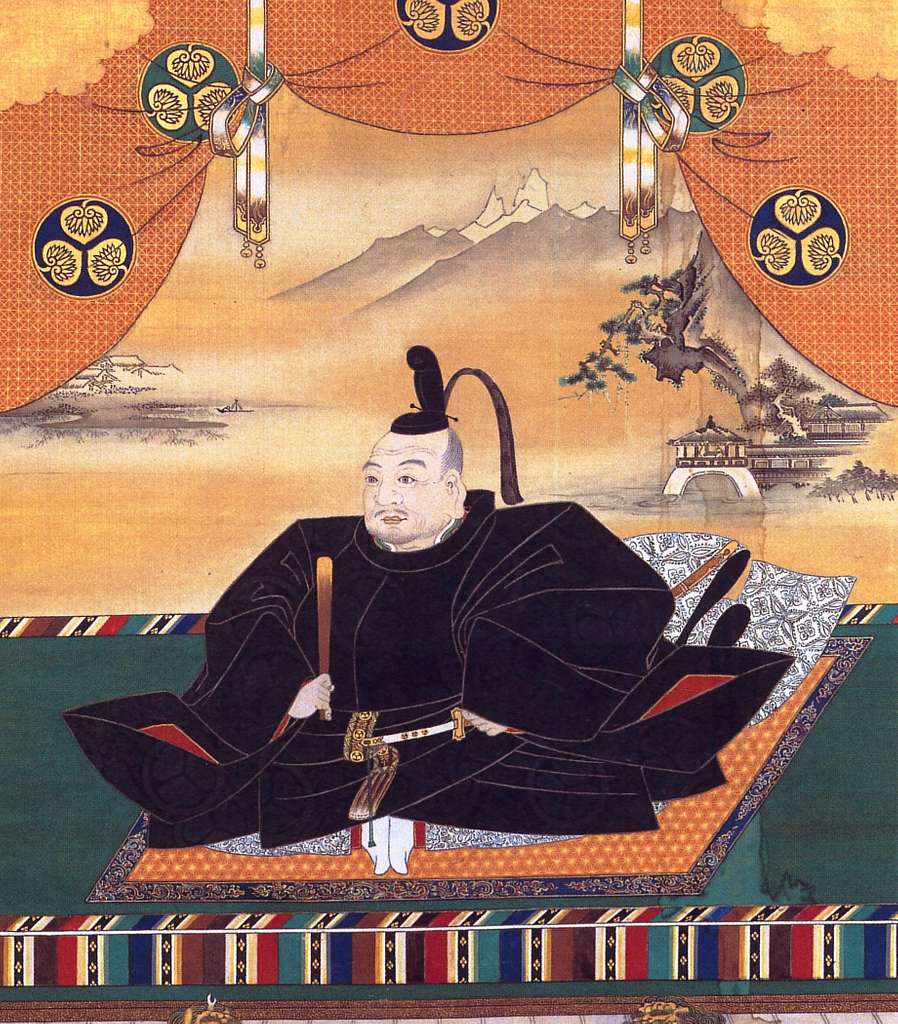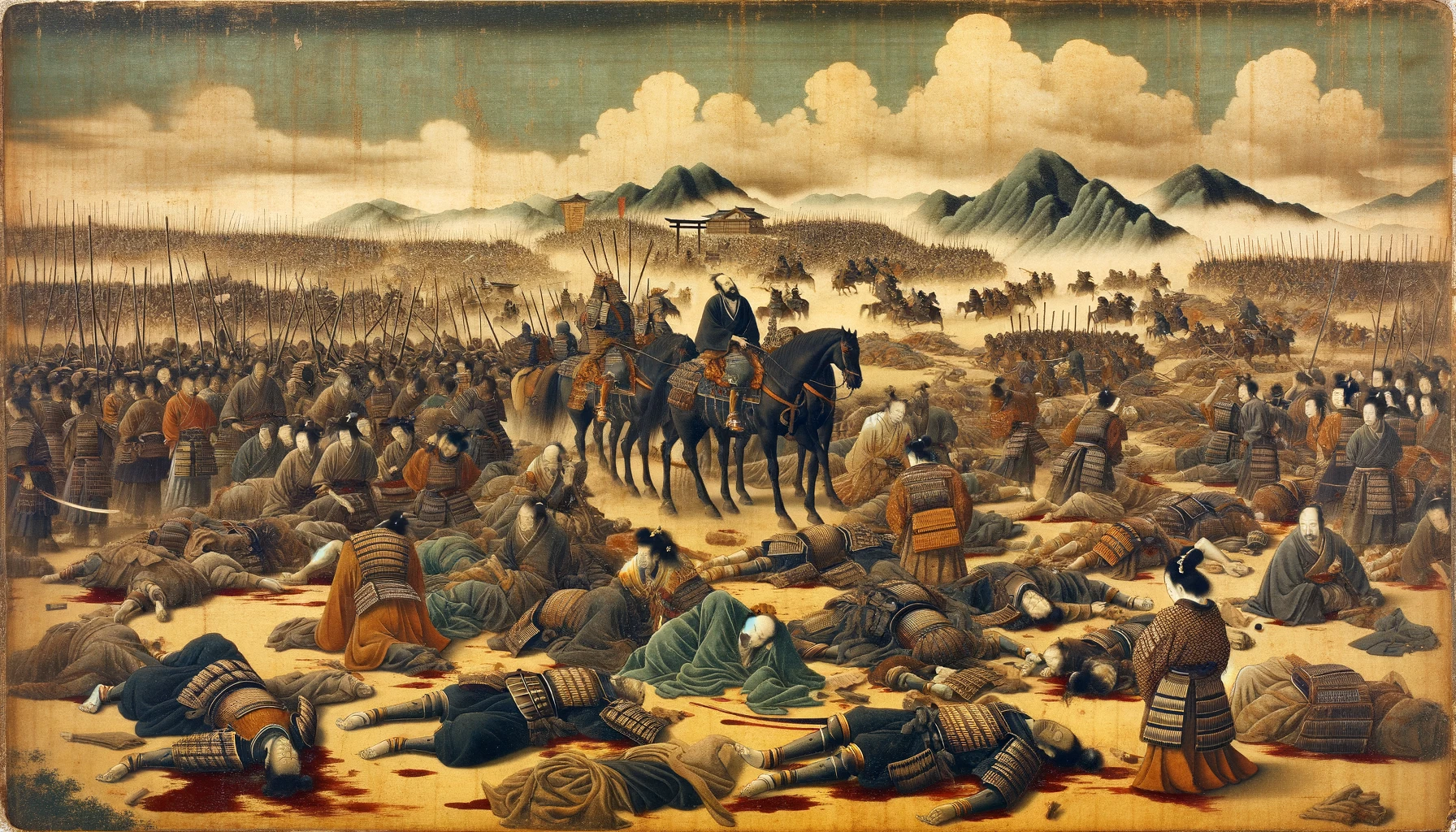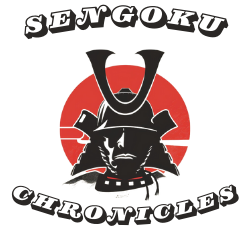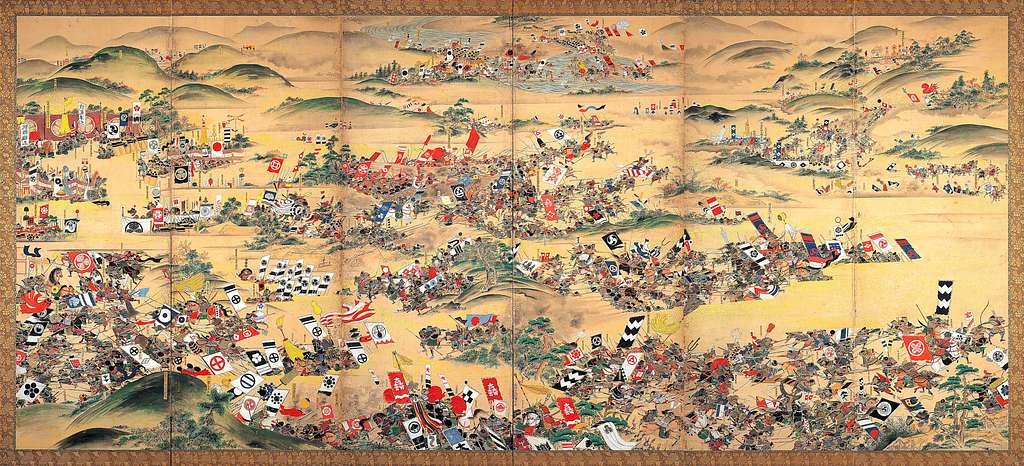Introduction
The Battle of Sekigahara is one of the most important events in Japanese history. It took place on October 21, 1600. This battle decided the fate of Japan for the next 250 years.
Before the battle, Japan was in chaos. The country was divided among many warlords, each fighting for power. This period of conflict is known as the Sengoku, or Warring States, period.
Tokugawa Ieyasu was a powerful and ambitious leader. After the death of Toyotomi Hideyoshi, Ieyasu saw a chance to seize control. He faced opposition from Ishida Mitsunari, who led the Western Army.
The Battle of Sekigahara was the decisive conflict between these two forces. It ended with a victory for Tokugawa Ieyasu. This victory allowed Ieyasu to establish the Tokugawa Shogunate, which ruled Japan for over two centuries.
In this post, we will explore the background, key events, and aftermath of the Battle of Sekigahara. Join us as we delve into this pivotal moment in Japanese history.
1. Background
1.1 The Sengoku Period
The Sengoku period was a time of chaos and war in Japan. It lasted from the mid-15th century to the early 17th century. During this time, Japan was divided into many small states. Each state was ruled by a daimyo, or warlord. These daimyos constantly fought each other for land and power. This period of constant conflict is known as the Warring States period.
1.2 Rise of Tokugawa Ieyasu

Tokugawa Ieyasu was born in 1543. He became a powerful daimyo and was known for his strategic mind. Ieyasu initially served under Oda Nobunaga, a key figure in the unification of Japan. After Nobunaga’s death, Ieyasu allied with Toyotomi Hideyoshi. Hideyoshi continued the efforts to unify Japan and became the de facto ruler. Ieyasu bided his time, building his power and waiting for the right moment to act.
1.3 The Death of Toyotomi Hideyoshi
Toyotomi Hideyoshi died in 1598. His death left a power vacuum in Japan. Hideyoshi’s young son, Toyotomi Hideyori, was too young to rule. This led to a struggle for control among Hideyoshi’s followers. Tokugawa Ieyasu saw an opportunity to take control. He began to gather allies and prepare for the inevitable conflict. This set the stage for the Battle of Sekigahara.
2. Prelude to the Battle
2.1 Formation of Alliances
After Toyotomi Hideyoshi’s death, Japan’s future was uncertain. The power struggle intensified. Two main factions emerged: the Eastern Army and the Western Army. Tokugawa Ieyasu led the Eastern Army. He aimed to unify Japan under his rule. Ishida Mitsunari led the Western Army. He wanted to protect the Toyotomi legacy and oppose Ieyasu’s ambitions.
Key figures joined each side. Ieyasu’s allies included prominent daimyos like Date Masamune and Honda Tadakatsu. Mitsunari’s supporters included Mori Terumoto and Ukita Hideie. These alliances were crucial for both sides as they prepared for the upcoming conflict.
2.2 Strategic Movements
The road to Sekigahara was marked by strategic maneuvers. Both sides sought to position themselves advantageously. Ieyasu moved his forces eastward, securing key castles and gaining support. Mitsunari, meanwhile, tried to consolidate his power in the west.
In the summer of 1600, the two armies began to move. Skirmishes and minor battles occurred as each side tried to weaken the other. The tension built as both armies maneuvered toward Sekigahara, a strategic location in central Japan. By October, the stage was set for a decisive confrontation.
The night before the battle, both armies camped on the plains of Sekigahara. The weather was poor, with heavy fog covering the area. This added to the tension and uncertainty. As dawn approached on October 21, 1600, the fog began to lift, revealing the opposing forces. The Battle of Sekigahara was about to begin.
3. The Battle of Sekigahara
3.1 The Morning of October 21, 1600
The Battle of Sekigahara began on the morning of October 21, 1600. The battlefield was shrouded in thick fog, adding to the tension. As the sun rose, the fog lifted, revealing the massive armies facing each other. The Eastern Army, led by Tokugawa Ieyasu, and the Western Army, led by Ishida Mitsunari, were ready for battle.
3.2 Key Engagements
The battle started with an exchange of volleys from arquebusiers. Both sides engaged in fierce combat. The terrain of Sekigahara, with its rolling hills and valleys, played a significant role in the battle’s dynamics. Various skirmishes broke out across the field.
One of the critical moments was the engagement at Mount Matsuo. Tokugawa Ieyasu’s forces attacked Mitsunari’s troops positioned there. The fighting was intense, with heavy casualties on both sides. Meanwhile, other key commanders led their troops into the fray, seeking to turn the tide of battle.
3.3 Betrayals and Turning Points
A pivotal moment in the battle was the betrayal by Kobayakawa Hideaki. Initially aligned with the Western Army, Hideaki hesitated to commit his troops. Ieyasu, aware of this, sent signals to encourage Hideaki to switch sides. At a crucial point, Hideaki’s forces attacked the Western Army, creating chaos and confusion.
This betrayal significantly shifted the battle’s momentum in favor of the Eastern Army. Other daimyos, seeing the tide turn, also switched allegiance to Ieyasu. The Western Army’s lines began to crumble under the combined assault.
By the afternoon, the Eastern Army had gained the upper hand. Ishida Mitsunari’s forces were overwhelmed and began to retreat. The battle ended in a decisive victory for Tokugawa Ieyasu. Mitsunari and other Western leaders were captured or killed, solidifying Ieyasu’s control over Japan.
The Battle of Sekigahara was over, marking the end of the Warring States period and paving the way for a unified Japan under Tokugawa rule.
4. Aftermath and Consequences

4.1 Immediate Aftermath
The immediate aftermath of the Battle of Sekigahara was marked by swift retribution. Tokugawa Ieyasu moved quickly to consolidate his victory. Ishida Mitsunari, along with other Western Army leaders, was captured and executed. This eliminated any significant opposition to Ieyasu’s rule.
The battlefield was littered with the dead and wounded. Estimates suggest that tens of thousands of soldiers perished. The families of those who fought were deeply affected, and many clans saw their power and influence diminish.
4.2 Establishment of the Tokugawa Shogunate
With his victory at Sekigahara, Tokugawa Ieyasu became the undisputed leader of Japan. In 1603, he was formally appointed as shogun by the emperor. This marked the beginning of the Tokugawa Shogunate, which would rule Japan for over 250 years.
Ieyasu implemented a series of political and social reforms to solidify his power. He redistributed land, rewarding his loyal supporters and punishing those who opposed him. The daimyo were required to pledge allegiance to the Tokugawa clan and adhere to strict regulations.
4.3 Long-term Impact
The Tokugawa Shogunate brought a period of relative peace and stability known as the Edo period. The centralization of power under the shogunate reduced the power of the regional daimyo, ending the constant warfare that had plagued Japan for centuries.
Economic growth and cultural development flourished during this time. The Tokugawa government promoted infrastructure projects, such as the development of roads and the standardization of currency, which facilitated trade and commerce.
The rigid social hierarchy and isolationist foreign policy, known as sakoku, defined the Edo period. Japan limited its interactions with the outside world, focusing on internal development and stability. This isolation lasted until the mid-19th century when Japan was forced to open its borders to foreign influence.
The Battle of Sekigahara thus marked a turning point in Japanese history. It ended centuries of feudal conflict and ushered in an era of peace and prosperity under Tokugawa rule. The consequences of this battle shaped the course of Japanese history for generations to come.
5. Legacy of the Battle
5.1 Cultural Significance
The Battle of Sekigahara has a profound cultural significance in Japan. It is often depicted in literature, art, and media, symbolizing the dramatic shift in Japanese history. Many novels, films, and TV series have portrayed the battle, highlighting the bravery, strategy, and betrayals that characterized the conflict. The story of Sekigahara resonates with themes of loyalty, ambition, and the quest for power, making it a compelling subject for storytellers.
In literature, works like Ryotaro Shiba’s “Sekigahara” provide detailed narratives of the battle and its key figures. In film, the 2017 movie “Sekigahara” brings the historical events to life, showcasing the intricate strategies and personal dramas involved. These cultural representations help keep the memory of Sekigahara alive in the public consciousness.
5.2 Historical Commemorations
The Battle of Sekigahara is remembered and commemorated in various ways across Japan. The site of the battle in Gifu Prefecture is a popular historical attraction. Visitors can explore the Sekigahara Battlefield, which features markers and plaques detailing key locations and events of the battle. The Sekigahara Warland museum offers exhibits, dioramas, and artifacts related to the battle, providing a comprehensive overview of this pivotal event.
Every year, the town of Sekigahara hosts a reenactment of the battle, attracting history enthusiasts and tourists. This event features participants dressed in period costumes, recreating the movements and strategies of the Eastern and Western armies. The reenactment serves as both an educational experience and a tribute to the historical significance of the battle.
5.3 Lessons and Reflections
The legacy of the Battle of Sekigahara extends beyond its historical and cultural impact. It offers valuable lessons on leadership, strategy, and the consequences of political ambition. The battle underscores the importance of unity and the dangers of internal conflict. It also highlights the role of individual actions and decisions in shaping the course of history.
Modern Japan reflects on Sekigahara as a symbol of the transition from chaos to order. The Tokugawa Shogunate’s long-lasting rule is seen as a period of stability and cultural development, setting the foundation for Japan’s modernization in later centuries.
Conclusion
The Battle of Sekigahara was a defining moment in Japanese history. It ended the chaos of the Sengoku period and set the stage for over two centuries of Tokugawa rule. Tokugawa Ieyasu’s victory at Sekigahara allowed him to establish the Tokugawa Shogunate, bringing peace and stability to Japan.
The battle itself was a complex and dramatic clash of armies, strategies, and personal ambitions. The betrayals and turning points during the conflict highlight the unpredictability and stakes involved. The immediate aftermath saw the consolidation of power by Ieyasu and the execution of his rivals, ensuring his uncontested dominance.
The long-term impact of the battle was profound. The Tokugawa Shogunate brought an era of relative peace, economic growth, and cultural development. The rigid social order and isolationist policies of the Edo period shaped Japan’s trajectory until the mid-19th century.
Today, the Battle of Sekigahara is remembered and commemorated in various ways. It holds a significant place in Japanese culture, inspiring countless works of literature, art, and media. Historical sites and reenactments keep the memory of the battle alive, allowing people to connect with this pivotal event.
The legacy of Sekigahara offers valuable lessons on leadership, strategy, and the consequences of political ambition. It serves as a reminder of the importance of unity and the impact of decisive moments in shaping history.
In exploring the Battle of Sekigahara, we gain a deeper understanding of the forces that shaped Japan and the enduring significance of this remarkable clash.
References and Further Reading
-
Books:
- Shiba, Ryotaro. Sekigahara. Kodansha International, 1988. A detailed and gripping historical novel that provides a vivid account of the battle and its key figures.
- Turnbull, Stephen. The Samurai Sourcebook. Cassell, 1998. A comprehensive guide to samurai history, including detailed sections on the Battle of Sekigahara.
- Bryant, Anthony J. Sekigahara 1600: The Final Struggle for Power. Osprey Publishing, 2005. An in-depth analysis of the battle, complete with maps and illustrations.
-
Articles:
- “The Battle of Sekigahara: A Pivotal Event in Japanese History.” Japan Times, October 20, 2020. An overview of the battle’s significance and its impact on Japan’s history.
- “Tokugawa Ieyasu and the Battle of Sekigahara.” History Today, Vol. 50, No. 8, August 2000. A detailed article on Ieyasu’s strategies and the aftermath of the battle.
-
Websites:
- Sekigahara Town Official Website: Sekigahara Battlefield – Information on the historical site, museum, and annual reenactments.
- Samurai Archives: The Battle of Sekigahara – A detailed chronology of the battle, including key figures and events.
-
Museums and Historical Sites:
- Sekigahara Warland: A museum featuring exhibits, dioramas, and artifacts related to the Battle of Sekigahara.
- Sekigahara Battlefield: Visit the actual site of the battle, complete with markers and information plaques detailing the key locations and events.
-
Films and Media:
- Sekigahara (2017) – A historical drama film that brings the events of the battle to life, highlighting the strategies and personal dramas involved.
- NHK Taiga Drama Series: Various episodes that depict the Battle of Sekigahara and its key figures, offering a dramatized yet informative perspective on the events.
These resources provide a comprehensive view of the Battle of Sekigahara, its historical context, and its lasting impact on Japanese history. For those interested in delving deeper, these books, articles, websites, and media offer detailed insights and engaging narratives.

